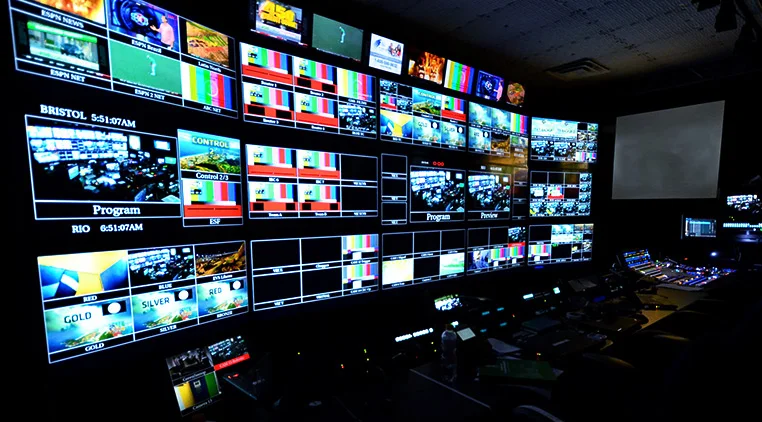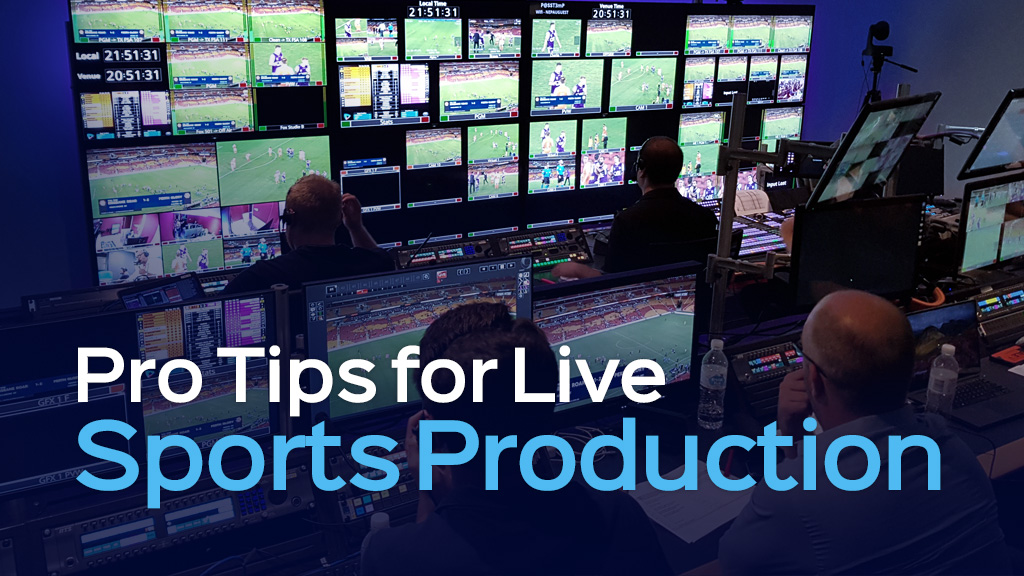
- Article
An Overview of Broadcast Technology: Key Components and Systems
Overview of Broadcast Technology
Broadcast technology is a dynamic field that combines various components, standards, and systems to deliver content efficiently. In fact, Broadcast technology encompasses a wide range of systems and processes used to transmit audio and video content to audiences.
Today, modern broadcast technology is characterized by its reliance on IP-based systems, cloud computing, and high-definition content delivery. With the rise of streaming services, VR/AR integration, advanced graphics, and data analytics, the industry continues to evolve rapidly.
In general, Modern broadcast technology has transformed the way content is created, distributed, and consumed, leveraging advanced tools and systems to deliver high-quality audio and video across various platforms.
Evolution from analog to digital broadcasting
The evolution from analog to digital broadcasting marks a significant transformation in how audio and video content is transmitted, received, and consumed. The benefits of digital broadcasting are numerous. It provides significantly improved audio and visual quality, while also enabling additional services such as electronic program guides and interactive features that enhance viewer engagement. Moreover, digital broadcasting increases channel capacity, allowing multiple programs to be transmitted over a single frequency through a process called multiplexing.
Globally, the adoption of digital broadcasting accelerated in the late 1990s and early 2000s, with key standards such as DVB-T for terrestrial broadcasting, ATSC in the United States, and ISDB-T in Japan. Many countries began implementing “analog switch-offs,” where analog broadcasts ceased to free up spectrum for digital services, a process that was largely completed in the early 2010s.
Despite many advantages, the transition, has presented challenges, including the significant costs of upgrading infrastructure, the need for consumer education on new technologies, and concerns surrounding equitable access, especially for populations lacking the requisite technology to receive digital signals.

How does broadcasting work?
Broadcasting works by transmitting audio and video content over radio waves, cables, satellite signals and other Distribution Technologies to reach a wide audience. Here’s a concise overview of how broadcasting functions, covering the key components and processes involved:
1. Content Creation
The broadcasting process begins with content creation in studios, where cameras, microphones, video and audio mixers, editing software and so on, are utilized to produce engaging media materials. They may encompass a wide range of content types, including news, entertainment, sports, educational programs, and more.
2. Signal Encoding
The raw audio and video contents are encoded into a digital format using codecs (e.g., MPEG for video, AAC for audio). This reduces file size and helps maintain quality during transmission.
3. Transmission
In modern broadcasting, the transmission of the encoded signals can occur through different methods. Terrestrial broadcasting utilizes ground-based towers to transmit radio waves, employing Amplitude Modulation (AM) and Frequency Modulation (FM) for radio broadcasts, along with Digital Terrestrial Television (DTT) standards like DVB-T or ATSC for TV broadcasts.
Satellite broadcasting sends signals to and from satellites orbiting the Earth, providing extensive geographic coverage, particularly beneficial for rural and remote areas. Cable broadcasting delivers signals directly to homes via coaxial or fiber-optic cables, offering a wide variety of channels and services.
4. Signal Reception
Audiences use various devices to receive broadcasts, such as radios, televisions, set-top boxes, Mobile phone etc. The receiver decodes the compressed signals back into audio and video formats, allowing users to view or listen to the broadcast.

Signal Processing Systems in Modern Broadcasting
Signal processing systems in broadcasting encompass equipment that manipulates, routes, and distributes audio and video signals to produce high-quality content for viewers. Below is an overview of the key components utilized in broadcast digital signal processing systems:
1. Multiplexers (MUX)
A multiplexer combines multiple audio and video signals into a single output stream. Multiplexers efficiently utilize bandwidth, enabling broadcasters to transmit multiple channels or streams over a single connection.
2. Video and Audio Switchers
In modern broadcast technology, A video production switcher (also called vision mixer) allows operators to switch between different video sources during live productions. It enables real-time transitions between cameras, graphics, and pre-recorded video clips, allowing for effects such as fades, cuts, and wipes to enhance the viewing experience.
Similar to a video switcher, an audio switcher manages multiple audio sources. It allows operators to select, mix, and control various audio inputs in real-time, ensuring balanced sound and smooth transitions during broadcasts.
3. Routers
A router directs audio and video signals in broadcasting, enabling flexible routing to various destinations.
4. Multiviewers
A broadcast Multiviewer allows operators to monitor several input signals simultaneously, facilitating better decision-making during live broadcasts by providing a comprehensive view of all active video feeds.
5. Audio Video Delay Units and modules
A delay unit or module applies a controlled delay to audio or video signals. It is essential for synchronizing audio and video or adjusting feeds by time and frame, in live broadcasts, especially when using multiple sources with varying latency characteristics.
6. Up/Down Cross Converters
An Up Down Cross Converter is a versatile device used in broadcast environments to convert video signals between different resolutions and formats. It can up-convert lower-resolution video to a higher resolution, down-convert high-resolution video to a lower resolution, and cross-convert between various formats (e.g., from 1080p to 2160p).
7. Audio Embedder
An audio embedder is a device that integrates audio signals into a video stream, allowing for seamless transmission of combined media. This process enables the inclusion of additional audio tracks, such as background music and metadata, within the video signal, ensuring that all elements are delivered together for broadcast or streaming.
8. Audio De-Embedder
In digital broadcasting an audio de-embedder is a device that extracts audio signals from a combined audio-video stream. This allows separate processing or routing of the audio content, enabling broadcasters to manage sound elements independently, such as remixing or sending audio to different outputs without altering the video.

Transmission Systems in broadcast industry
1. Coaxial Cables
Although fiber optics are becoming more prevalent, traditional coaxial cables are still widely used in modern broadcasting, especially for connecting equipment within studios or for short-distance transmissions. Comprising an inner conductor, insulating layer, outer conductor, and protective outer layer, coaxial cables shield signals from interference and can carry both audio and video signals.
2. Distribution Amplifiers
Video Distribution amplifier plays a crucial role in boosting signal strength for further transmission, ensuring consistent quality across multiple output points. By amplifying incoming signals, they counteract any losses incurred during transmission, enabling clear delivery to various equipment or locations within a broadcast facility.
3. Fiber Optic Cables
Fiber optic cables are increasingly favored in broadcasting due to their ability to transmit large amounts of data over long distances with minimal signal loss. Using light to carry information, fiber optics offer high bandwidth, making them suitable for high-definition (HD) and ultra-high-definition (UHD) video signals. They experience low signal loss and are immune to electromagnetic interference, ensuring a stable and reliable transmission.
4. IP-Based Transmission Systems
The adoption of Internet Protocol (IP) technology has transformed broadcasting by allowing audio and video content to be transmitted over standard Ethernet networks. IP-based systems enable seamless integration with existing IT infrastructure, utilizing protocols like Real-Time Messaging Protocol (RTMP) and Real-Time Streaming Protocol (RTSP) for efficient streaming.
5. Satellite Transmission
Satellite transmission is vital for delivering broadcast signals to remote locations and covering wide geographical areas. Broadcasting stations send signals to satellites in orbit, which relay them to ground-based receivers. This method offers extensive coverage and can reach rural and underserved areas where other forms of broadcasting may not be feasible.
Broadcast Control Systems
Broadcast control systems are crucial for managing, coordinating, and automating the various processes involved in broadcasting. They ensure the smooth operation of audio and video content delivery within a broadcasting environment. Key components of broadcast control systems include the Production Control Room (PCR), Master Control Room (MCR), Transmission Control Room (TCR), and automation systems. Here’s a seamless overview of these elements:
1. Production Control Room (PCR)
The Production Control Room (PCR) integrates the creative and technical elements of broadcasting. It manages live productions by overseeing audio, graphics, and camera feeds. In fact, PCR personnel are responsible for directing live broadcasts.
2. Master Control Room (MCR)
The Master Control Room serves as the central hub for overseeing broadcasting operations. It is responsible for managing all signal feeds and ensuring that content is delivered accurately and on schedule.
3. Transmission Control Room (TCR)
The Transmission Control Room focuses specifically on signal transmission and distribution, controlling how signals are sent out to various platforms such as cable, satellite, and digital networks. TCR operators handle signal processing, including encoding, modulation, and transmission preparation.
4- Automation Systems
Automation systems enhance efficiency by streamlining many functions that were traditionally performed manually. These systems manage playout automation, scheduling content, and controlling transitions between programming segments and advertisements. They also provide real-time monitoring of playback status, alerting operators to any issues that may arise. Additionally, automation solutions integrate with other broadcast systems to ensure seamless operations across all broadcasting activities.

Challenges in Modern Broadcast Systems
Modern broadcast systems face several challenges that impact their ability to deliver high-quality audio and video content effectively. Key challenges include scalability, latency, infrastructure constraints, audience fragmentation, and operational costs.
1. Scalability
As demand for high-quality and diverse content grows, broadcast systems must scale to accommodate expanding audiences and increasing data traffic. Upgrading infrastructure to handle larger volumes of data, from high-definition (HD) to ultra-high-definition (UHD) content, can be complex and costly. Systems must be designed to easily incorporate new technologies and services without significant downtime or overhauls.
2. Latency
Latency, or the delay between broadcasting content and its reception by the viewer, poses a significant challenge. High latency can impact live broadcasts, leading to synchronization issues between audio and video or between the broadcast and viewer experience, particularly in live sports or events. Reducing latency while maintaining quality is a persistent challenge, especially with the reliance on IP-based transmission and streaming technologies.
3. Infrastructure Constraints
The physical and organizational infrastructure required for modern broadcasting can limit capabilities. Upgrading infrastructure to support new technologies, such as 5G for mobile broadcasts or cloud-based services for content delivery, requires significant investment. Additionally, geographic limitations can hinder deployment in certain areas, affecting service delivery.
4. Audience Fragmentation
The rise of multiple platforms and streaming services has led to higher audience fragmentation. Catering to diverse viewers who consume content across various devices and platforms complicates content distribution strategies. Broadcasters must create tailored experiences for each platform while maintaining brand consistency and visibility.
5. Operational Costs
Balancing the operational costs associated with running modern broadcast systems is an ongoing challenge. With rising expenses related to equipment upgrades, content creation, and distribution, maintaining profitability while delivering high-quality content can be increasingly difficult. Organizations must find ways to optimize workflows and reduce expenses without sacrificing quality.









